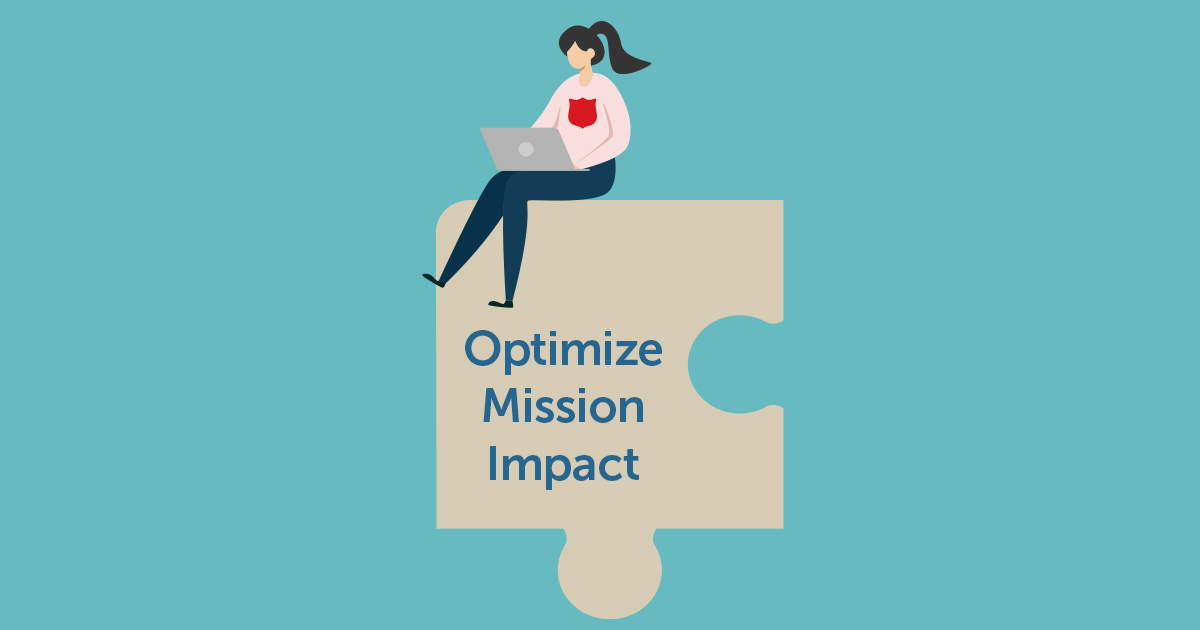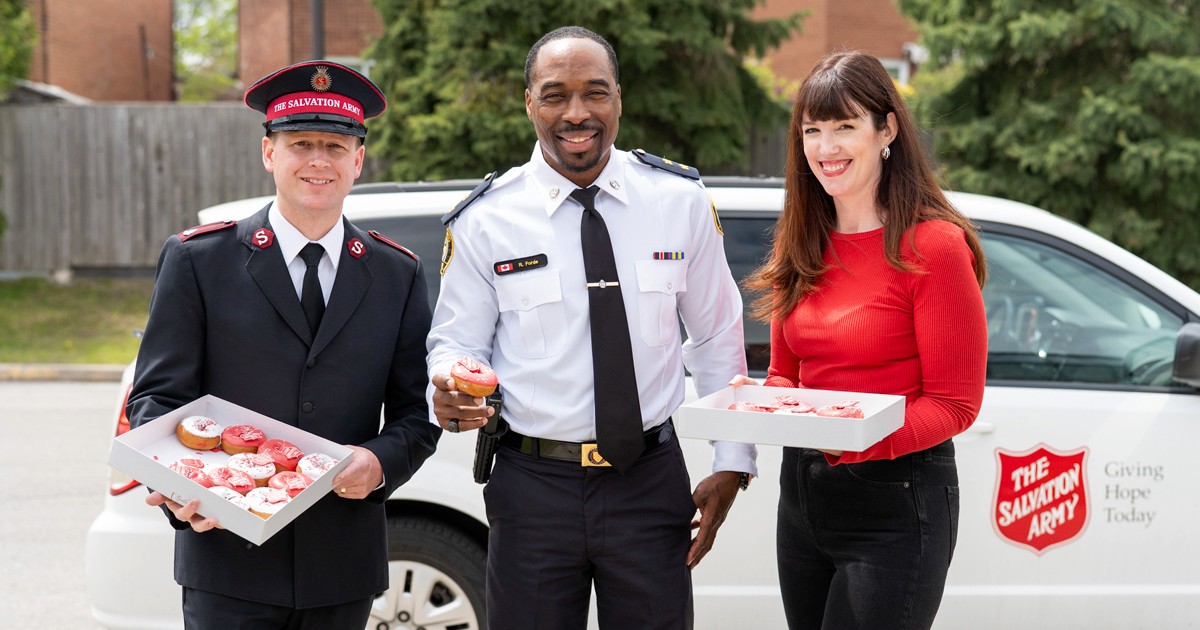“You can’t manage what you don’t measure.” So said Peter Drucker, one of the most widely known and influential thinkers on management. With that in mind, let’s consider the final pillar in our series on The Salvation Army’s new strategic plan for the Canada and Bermuda Territory: optimize mission impact.
Optimizing mission impact requires us to look closely through the lens of our territorial mission, vision and values to examine how the ministries and services we provide align with these statements and their outcomes. This begins with understanding how and where we can have the most impact in our communities today. It’s matching the supply of our ministry with the demands and needs of people.
These strategic objectives align with this pillar:
- The focusing of ministry efforts places us where we are most needed and can be most effective
- Our personal and corporate lives of faith are transforming influences in our communities
- Our mission delivery and support models strengthen our ministry expressions’ ability to focus on effective, holistic mission impact
Our internal structures and processes are designed to serve spiritual and social services in our communities. A first step is determining if are we providing the right services, both social and spiritual. A comprehensive needs analysis through tools like community mapping can help us better understand those communities where we have ministries, their makeup, their needs and how we meet them.
Another part of our strategic plan will be the development of measurement tools. At the moment we gather a lot of statistics, but we need to ask if they are the right statistics. What should we be counting? We can count the number of people we connect with, but do we really know the transformational impact we’re making? How do we measure it?
Territorial headquarters, in consultation with divisional representatives, is currently undertaking a review of our social footprint under our strategic plan. We are trying to navigate an increasingly complex social service landscape, shifting needs in our communities, our partnership with other non-profits, changing government regulations, heightened responsibility to funders and alignment with our mission. Can we be better at informing and influencing policy and funders to support us based on the impact we can make?
Janet Park, territorial director of development, affirms we are becoming more intentional: “As we forge stronger partnerships and build meaningful relationships with supporters, we need to be able to show positive outcomes. People want to know that their donations of time, talent and resources are making a difference. That means understanding their motivations for giving, aligning their interest with particular Army ministries and demonstrating transformational impact.”
In a similar way, it’s helpful to establish a consistent lens with regards to corps. What impact are corps having on individuals and their communities as we share the love of Jesus and meet human needs? Where and on what basis do we plant, expand, merge or close corps? To decide, we need to analyze the history, current realities, opportunities and best practices to discern where and how God is moving and leading our corps expression.
Another way to optimize mission impact is to ensure our corps/churches reflect the communities in which we worship and serve. That can be challenging in some areas of the territory where the community around our corps is different from our current congregational makeup. What do we do, for example, when refugees and new Canadians move into the neighbourhood? How can we be a welcoming community, helping them feel at home as newcomers to our country?
We also have to face the difficult reality that some of us are more comfortable within our churches than we are in our communities. How do we move outside our four walls to engage better? Commissioner Floyd Tidd once remarked, “I’m not as concerned about how many people from our communities attend our corps as I am about how well our corps attend to our communities.”
Lt-Colonel Lynn Armstrong, territorial secretary for mission, notes, “Our personal and corporate lives of faith are the ‘salt and light’ influences in our communities. Therefore, we must give attention to developing and implementing tools that support us in effectively and meaningfully permeating, partnering and serving in our communities; this includes training resources in community engagement.”
Of course, like any organization, our resources are finite. That’s why The Salvation Army wants to focus its ministry where we are most needed. This requires regular review, careful allocation of our efforts and resources, and a continued commitment to sharing the hope of Jesus Christ.
Peter Drucker once called The Salvation Army “by far the most effective organization.… No one even comes close to it in respect of clarity of mission, ability to innovate, measurable results, dedication and putting money to maximum use.” Let’s continue to prove him right.
Illustration: nazarkru/iStock via Getty Images Plus
This story is from:










For the past year and a half, I’ve felt called to focus more on helping to plan at the corps level. Even though I’d heard of the Mobilize 2.0 strategy, I didn’t really know anything about it. We had a sermon series introducing the territorial vision statement, but the significance was lost on me at the time. In the last month, I’ve been spending time studying the territorial strategy and the 4 pillars. The first pillar is the right starting point. The second pillar, so far, hasn’t resonated with me yet for working out how a congregation can become engaged in achieving the corp’s mission. The third pillar is very relevant for what I’m doing right now, but working out the details will happen down the road. But in this article about the fourth pillar, I was very glad to see references to advance my work on corps planning. I’ve become much more encouraged about the direction that our territory is heading in and want to thank and congratulate the THQ staff on what they do.
EDITOR:
Tom, Thanks for your comment. We asked Human Resources for a response to your question. Here is their reply.
In the context of our HR transformation, when we refer to "systems," we're talking about a framework that brings together processes, tools, HR roles, and technologies. This framework is carefully designed to handle the various aspects of HR within our organization. These systems aren't just about technology; they're a strategic approach to make work easier and more enjoyable for everyone involved, from those on the front lines to those engaged in mission work across Corps, Social, retail, and administrative functions. Essentially, we are streamlining processes to free up time from Ministry Unit leaders so they can be more focused on Mission.
Our initiative is all about making things more consistent and straightforward across essential HR functions. This includes streamlining recruitment, onboarding, time tracking, leaves, scheduling, and payroll. The big picture goal is to create a smooth, well-organized approach to HR services and technology, ensuring that the experience from the beginning to the end of someone's time with us is seamless and positive.
Our systems for HR Service Delivery and Workday (our new HR and payroll system) are built to tap into a helpful resource—knowledge articles, information, and guides. And when someone needs extra support or guidance, the systems are set up so that front-line staff can easily reach out to HR professionals. This creates a supportive and responsive network. This means that every individual, no matter their role or where they fit in the organization, can easily access the information and processes related to their work. It's all part of our commitment to making things more efficient and enhancing the overall experience for everyone in our organization.